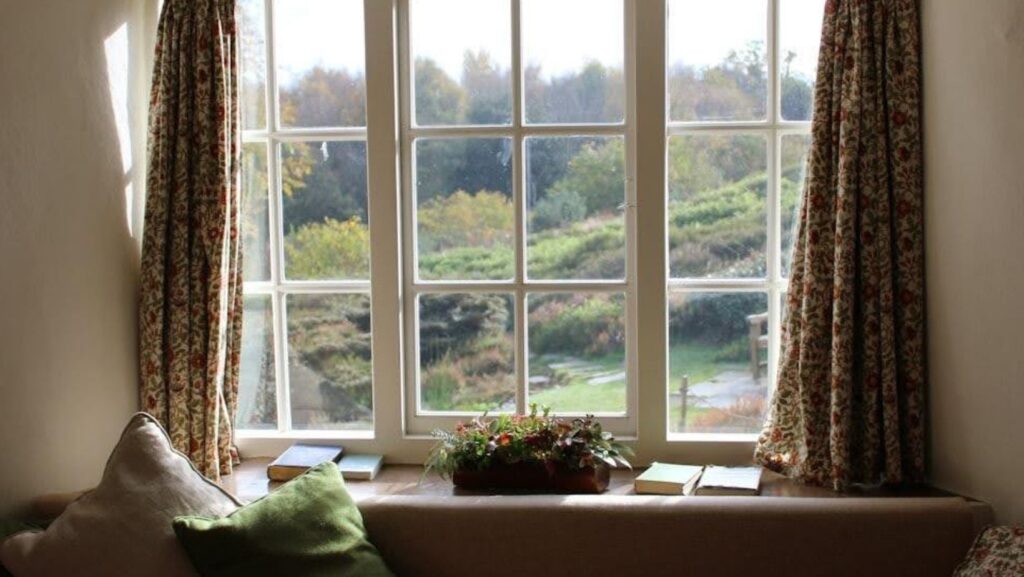A bright, breezy home feels welcoming, comfortable, and energizing. Light and airflow influence everything from mood and productivity to temperature and indoor quality. Yet many homes suffer from dim rooms, stuffy corners, or stagnant air simply because they rely on outdated layouts or heavy décor. Enhancing natural brightness and creating better circulation does not always require a full renovation. With thoughtful adjustments, homeowners can significantly improve the atmosphere of any space.
Whether you live in a compact apartment or a spacious house, small changes make a big difference. These practical methods help refresh your interior, promote better ventilation, and create a space that feels open, airy, and healthy.
Adding Vertical Light Sources for Better Illumination
One of the most effective ways to brighten a home is by increasing the amount of natural light entering the space. Walls and ceiling structures often block sunlight from reaching deeper areas of a room. When homeowners want a dramatic improvement, many choose to install a skylight or explore other overhead lighting solutions that bring sunlight directly from above. This vertical entry of light illuminates spaces that traditional windows cannot reach.
Skylights transform dim hallways, bathrooms, kitchens, and loft areas by allowing sunlight to pour in during the day. The result is a more cheerful interior with improved color accuracy and reduced reliance on artificial lighting. Even small skylight designs can brighten wide areas and help regulate indoor temperature by allowing warm air to rise and escape through ventilated models.
For homeowners not ready to install structural features, solar tubes and light shafts offer similar benefits with fewer construction requirements. These alternatives still draw sunlight from above and distribute it effectively throughout the room.
Using Mirrors and Reflective Surfaces To Maximize Light
Mirrors amplify natural light by reflecting brightness deeper into a room. A large wall mirror placed opposite a window doubles the perceived daylight, giving the space a more open feel. This technique works well in small rooms or areas with only one narrow window.
Reflective décor, such as polished furniture, glass shelves, metallic fixtures, or glossy finishes, adds subtle brightness without feeling overwhelming. Light bounces off these surfaces, creating an airy atmosphere even in shaded corners.
Strategically placing mirrors in hallways or staircases helps draw illumination through longer pathways. These small additions create smoother visual flow and make compact spaces appear more expansive.
Creating Clear Airflow Pathways With Smart Furniture Placement
Airflow depends on pathways. When furniture blocks vents, doorways, or windows, air struggles to circulate. Rearranging furniture to open these pathways improves ventilation instantly. Moving large pieces away from windows ensures air can move freely across the room.
Cross-ventilation is one of the simplest ways to create a refreshing indoor breeze. Opening windows on opposite sides of the home encourages air to flow naturally. This method works well during mornings and evenings when outdoor temperatures are milder.
Lightweight curtains or blinds support airflow better than heavy drapes. Choosing materials like linen or sheer fabrics allows fresh air to enter while still providing privacy.
Choosing Plants That Support Cleaner Air and Fresher Circulation
Indoor plants do more than add beauty, they contribute to cleaner, healthier air. Certain varieties naturally filter pollutants and improve humidity levels. Peace lilies, spider plants, English ivy, and snake plants all support better indoor air quality with minimal maintenance.
Plants influence airflow in subtle yet meaningful ways. Positioned near windows, they help guide gentle breezes throughout the room. Larger plants placed in corners promote circulation by reducing stagnant pockets of air.
Greenery transforms the atmosphere of a space, making it feel more alive and breathable. When placed thoughtfully, plants enhance both visual appeal and indoor comfort.
Incorporating Light-Enhancing Décor and Bright Color Schemes
Color plays an important role in how light behaves indoors. Pale or neutral wall colors reflect more light, brightening the room naturally. Whites, creams, soft grays, and muted pastels expand a space visually and complement incoming sunlight.

Artwork, textiles, and décor in similar tones further support an airy environment. Minimalistic arrangements help light travel without interruption. Choosing furniture with raised legs or slender frames allows light to pass through freely, preventing shadows from dominating the room.
Improving Ventilation Through Routine Maintenance and Helpful Additions
Ventilation suffers when dust, dirt, or blockages limit airflow. Cleaning vents, replacing filters, and maintaining ceiling fans help keep air moving efficiently. When fans rotate counterclockwise during warm months, they create a cooling breeze that improves comfort.
Installing window fans or exhaust fans in kitchens and bathrooms removes warm air, steam, and odors. These units reduce humidity levels, protecting surfaces from mold while refreshing indoor circulation.
Homeowners may consider adding trickle vents or louvered openings to promote steady airflow throughout the day. These subtle features maintain consistent ventilation without creating large temperature swings.
Improving natural light and airflow transforms more than just the appearance of a room, it enhances the entire living experience. A well-lit, well-ventilated home feels more peaceful, uplifting, and energizing. By combining thoughtful design choices, routine maintenance, and strategic adjustments, homeowners can create an environment that feels spacious and refreshing.
Whether through skylights, mirrors, plants, or simple layout changes, these methods allow every home to reach its full potential as a welcoming, comfortable sanctuary.
